
Medusa, like many other classic Greek myths, has become a cultural icon. She was one of the three Gorgons, meaning creatures who resembled human females save for their heads, from which snakes sprouted instead of hair. The eyes of Gorgons could also turn humans to stone.
Medusa’s story ended when she was decapitated by the hero Perseus, who then used her severed head as a weapon before he gave it to the goddess Athena. Even if one does not know the whole story, it is difficult to see a woman with snakes for hair and not associate the motif with Medusa.
Because this legend has been around since the first century BC, there have been many interpretations of Medusa throughout media and art history: Here are just a few of them, listed from oldest to newest.
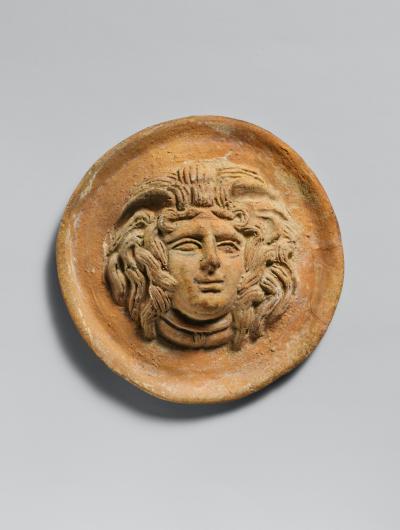
Medusa was used as a symbol to ward off evil around this time, so she is often present on decorative pieces meant to furnish either the inside or outside of a home. Here she looks remarkably human, her hair consists of thick curls rather than venomous snakes, but she can nonetheless be identified by the little wings that adorn her forehead.
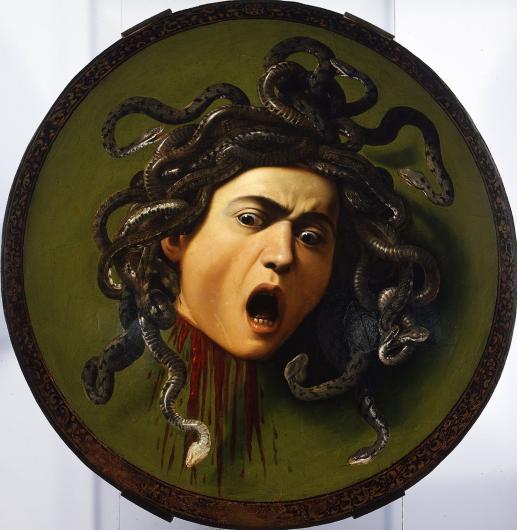
This painting offers a much more intense interpretation of the Gorgon who, in this instance, has been recently decapitated. The red of the blood that jets out of Medusa’s throat stands out brilliantly against the muted green background.
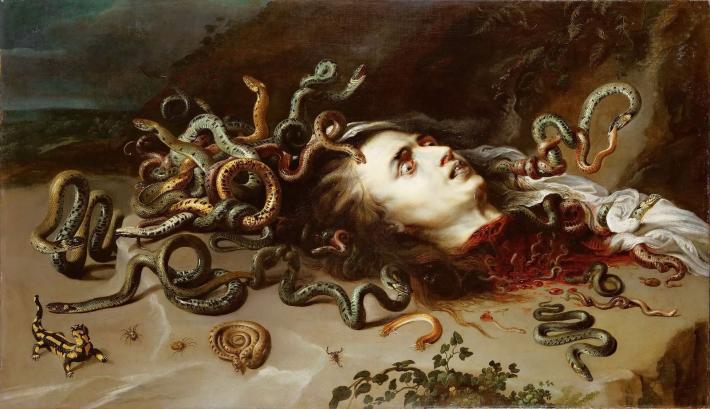
It is common for artists and sculptors to create pieces depicting Medusa post-decapitation, but this one is particularly gruesome. While Caravaggio’s Medusa had only snakes for hair, Rubens’ interpretation of Medusa includes real human hair alongside the writhing serpents. This addition humanizes her yet adds no compassion, which makes gore spilling out of her neck all the more shocking.
Rubens emphasizes the association between Medusa and lowly vermin by adding animals such as scorpions, newts, and spiders along with the snakes.

Similar to Caravaggio’s Medusa, Maes’s Medusa scrunches her face as a wretched scream warps her features. Without prior knowledge of who Medusa is, it may be difficult to discern that the person here is even female. The faces of the snakes look more like rats than anything else, almost Seussian with whiskers and buck teeth. This is a very unsympathetic portrait of Medusa.
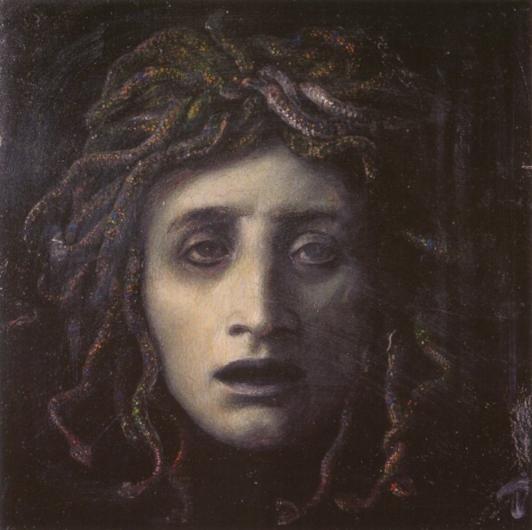
In contrast to the previous paintings, Böcklin’s Medusa is dark and washed out. Medusa actually looks dead. Her eyes are dull gray and her lips almost look blue as she stares vacantly ahead. Ironically, the colors almost make her look as if she’s been turned to stone. Her face is not monstrous, but it is not exceptionally beautiful.
Interestingly, Sigmund Freud interpreted this piece to represent a boy’s fear of castration, but this argument feels like a bit of a stretch. Freud fails to understand Medusa as an isolated entity and that she does not exist solely to be a point of fear for boys and men.
Medusa con la cabeza de Perseo - Medusa holding Perseus’ head. Escultura de Luciano Garbati, 2.25 mts. Sculpture by Luciano Garbati, 92 inches. pic.twitter.com/MNj87vBUFH
— Luciano Garbati (@GarbatiLuciano) July 9, 2018
This sculpture by Luciano Garbati turns the tables on the classic myth. The change is simple: Medusa has decapitated and now carries the head of Perseus rather than vice versa.
The sculpture, simply titled Medusa, began to be viewed as a piece of feminist art around the late 2010s when the #MeToo movement gained traction. In 2020, the statue was relocated to Lower Manhattan, directly across from the Centre Street criminal courthouse. This is also one of very few interpretations of Medusa that includes her body, which further feeds into the feminist message that so many see in Garbati’s piece.
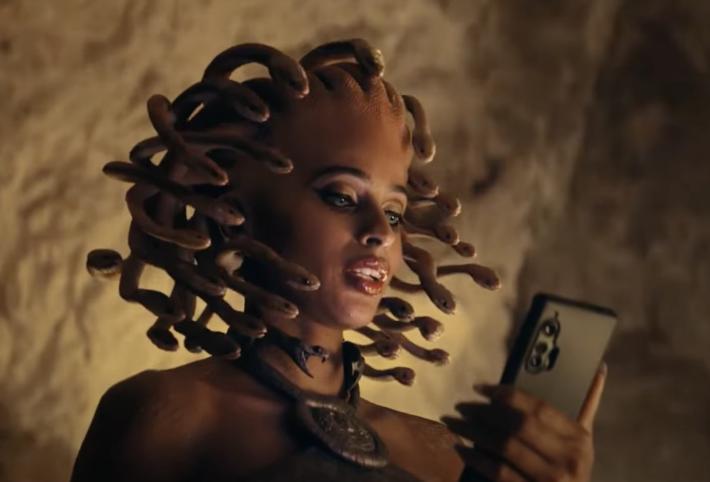
In 2021, Amazon released an advertisement staring Medusa. This may be the most forgiving depiction of the Gorgon. Makeup accentuates her decidedly non-monstrous face and the tone of the piece is noticeably lighthearted.
The ad plays on Medusa’s famous stone-turning abilities. Fed up with the impact this power has on her social life (she’s always accidentally turning them into stone) she finds a solution using Amazon Prime. The conflict is resolved, of course, with Prime’s Same-Day Delivery service; she orders sunglasses and goes to a party.
Unlike so many past portrayals, this ad plays with the idea that Medusa is not evil but rather misunderstood.
Today, the mythical female figure presented as a grotesque monster is now seen more as a silenced victim.
The societal perception of Medusa has shifted since her tale was first told. Whether these changes are due to the rise of women’s rights or because we tend to enjoy the redemption of a villainous figure is unclear. Either way, a woman who was presented as a grotesque monster can now be seen as a relatable character.
Gail Ostbye
Gail Ostbye is a rising senior at the University of North Carolina at Greensboro and a current intern at Art & Object. She is majoring in English and hopes to enter a career in editing. When she isn’t working she enjoys writing songs in her free time.























